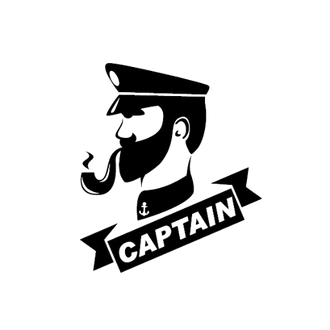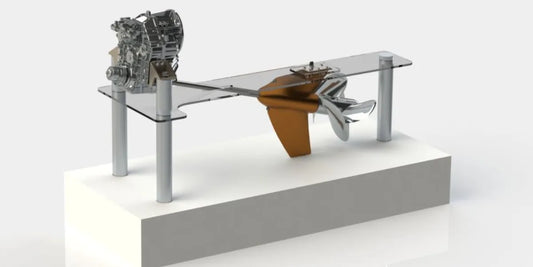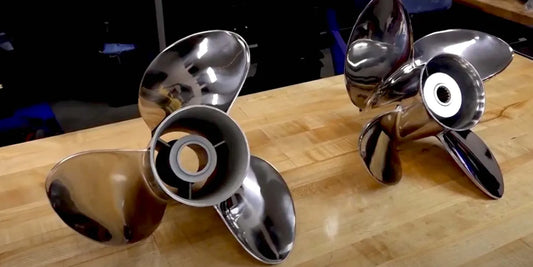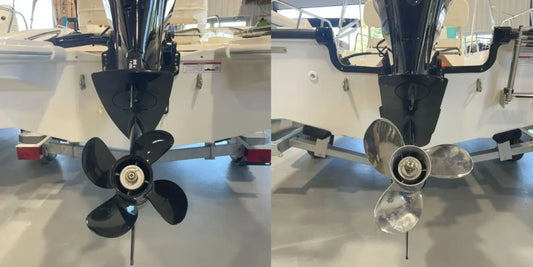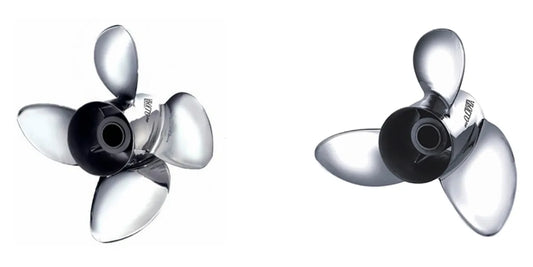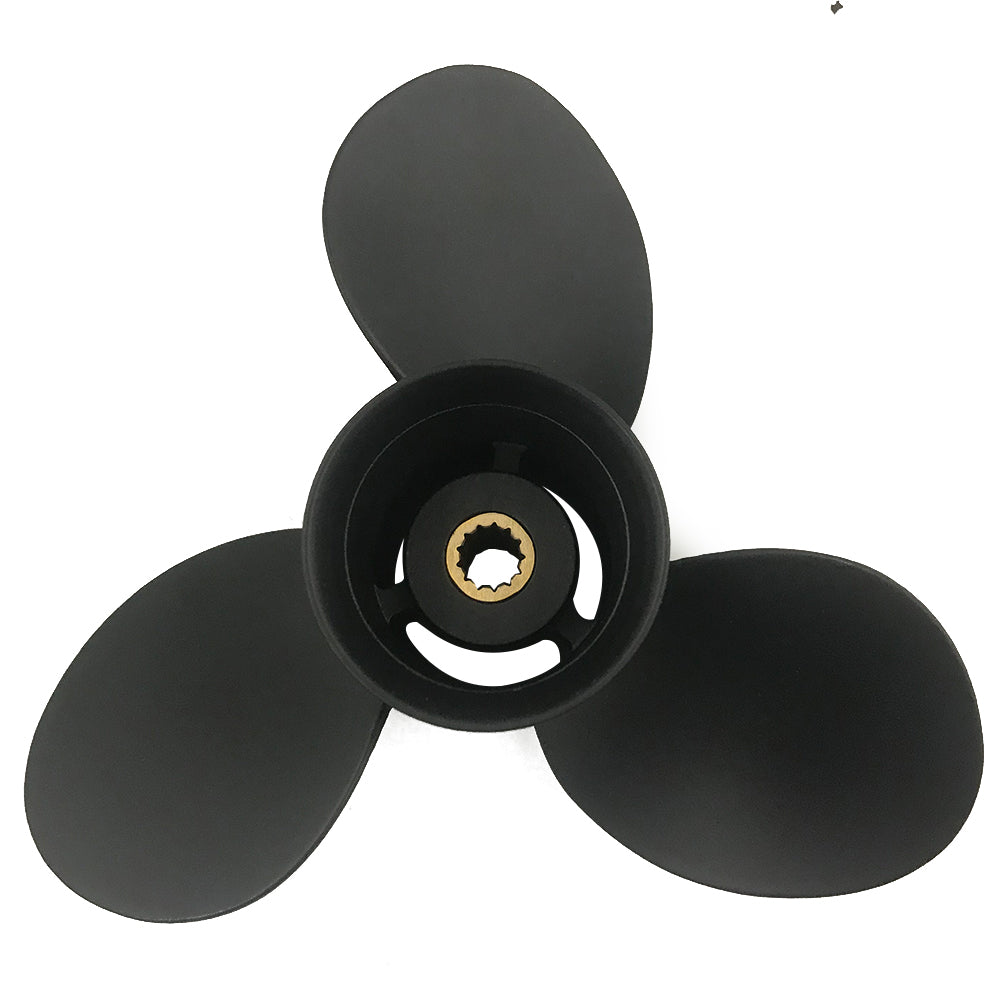For a long time, the debate over 3-blade vs. 4-blade propellers has divided the boating fraternity. One side upholds that three blades mean speed and efficiency; the other won't settle for less than stability and control afforded by four blades. So, what is best for your vessel? Well, this guide elucidates every aspect one should consider when choosing between 3-blade and 4-blade propellers. We will discuss their performance characteristics as we go over each advantage and disadvantage on the table; then, we will help you decide which one best fits your boating style and conditions. You will be fully informed so you can make your own decision and ensure maximum enjoyment on the water.
Introduction to Boat Propellers

What Are Boat Propellers?
Boat propeller is a spinning device with angled blades that uses engine power to generate thrust and move your boat across the water. You could call it the final element in the power chain of your vessel: the engine creates torque, the drive-train delivers it to the propeller, which in turn moves the boat forward.
There are many propeller types, but one of the most significant performance determinants is the number of blades. Each blade acts as a hydrofoil creating pressure differentials that accelerate water backward and thereby, push the boat forward. The number of blades, their shape, pitch, and diameter are thus all parameters that affect propulsive efficiency under various conditions.
Selecting the Right Blade
The wrong propeller is like snow tires on a sports car. You get there alright; however, the experience is not the best. A prop that suits the engine will help in fuel economy and handling characteristics particular to the boat on a design and use basis.
If the prop is not matched well, the engine overworks, leading to premature wear and higher fuel costs. Additionally, you may experience sluggish acceleration, reduced top speed, or difficulty maintaining control in rough conditions. On the other hand, the best propeller keeps your engine within the optimal operating RPM range, thereby offering a significant improvement in engine performance across all fronts.
A General Primer on 3 and 4-Blade Propellers
Power, here, means the forging of a commercialful bond between the trade performance motivations inhering in the 3- or 4-blade propeller. For decades, 3-blade propellers have reigned as the preference of recreational boaters seeking high speed and efficiency. More recently, however, four-blade propellers have been gaining popularity among the boaters who prefer smooth operation and strong low-end thrust.
Each of these configurations manifests its unique characteristics. Three-bladed propellers generally have larger single blades, spaced farther apart, which reduces drag at top speeds. In contrast, a four-bladed propeller will apply forces over a larger thrust area, resulting in smoother power delivery and better bites under adverse conditions.
3 Blade Propellers: Advantages and Disadvantages

Performance Characteristics of 3 Blade Propellers
Three-blade propellers are traditionally better at converting horsepower into speed than any other. Fewer blades cutting through the water mean less drag, thus, higher RPMs for your boat and therefore greater top-end velocity. Hence, they are usually chosen by performance-related boaters and those who frequently run in the open water.
The design also excels at pushing a boat into the plane efficiently, especially with light boats. With bigger blade areas than a four-blade one (where the same area is distributed somewhat differently), they generate enough lift to push the bow up and help the hull glide off the surface.
In the low-speed category, however, a three-blade propeller can be a little harsher. The empty spaces between the blades cause more obvious pulsations from thrust, which some mariners interpret as vibrations or choppy randomness when idling or moving about at the dock.
Fuel Efficiency and Speed-Related Considerations
At cruising speeds, fuel economy often favors three-blade props. Being less draggy means the engine doesn't have to work as hard to maintain a given velocity; hence, greater mileage is achieved over long distances.
This is the realm of top-speed performance for three-blade propellers. Suppose you aim to cover water as quickly as possible, hitting the advertised maximum speed, or engaging in performance boating. In that case, the three-blade configuration will generally serve you better than a four-blade propeller of similar design.
That said, fuel efficiency is not always about cruising: frequent operation at low speeds and strong acceleration and deceleration will make a four-blade prop more efficient by providing more thrust at those speeds.
Best Applications for Three-Blade Propeller
Three-blade propellers find their use mainly in:
Performance boats and ski boats: Where maximum speed and quick acceleration matter most
Lighter vessels: Those that benefit from the drops in drag and do not work for any more bite to get on-plane speed.
Under open water cruising, where you'd be cruising at a rather consistent speed and want to maximize fuel economy.
Smaller-engined boats: That give out every bit of the RPM to perform.
If you have a bass boat for small lakes, a bowrider for family recreation, or anything where speed at the top end is more important than low-speed handling, that's probably a three-blade prop that fits your needs.
4 Blade Propellers: Advantages and Disadvantages

Some Performance Characteristics of 4-Blade Props
Four-blade propellers impart power differently from a three-blade propeller. The thrust transmitted through the extra blade smooths the propulsion, making it more consistent and less vibratory. The result is a quieter, more refined boating environment.
This extra blade also bites and grips the water better. You will most noticeably feel it from standing start acceleration or when going on plane. Four-blade props grip harder and hence the reduced slippage and cavitation; in that regard, they are better suited for heavier boats or boats carrying heavy loads.
Spot-low-speed thrust control would be another advantage. When in tight quarters, thrust becomes much more predictable, which renders docking and slow-speed driving easier and more precise.
Stability and Control in Different Conditions
The rough waters here provide a perfect comparison between three- and four-blade designs. A four-blade propeller tends to remain in uninterrupted contact with the water when waves, wind, or wake disturbances disturb your boat's smooth motion. Air entrainment or cavitation is less likely to occur because there is less space between the blades when your prop breaks the water surface.
Hence, you get better handling in choppy conditions. Your boat will feel more planted, there will be less porpoising (that bouncing motion some boats encounter at speed), and the steering response will seem more predictable. To the sailor who often travels through troublesome waters, this stability is indeed worth the trade-off in top speed.
Then a four-blade propeller has a high benefit for towing. The strong, low-torque, and smooth power delivery from a four-bladed prop provides a better experience while towing water skiers, wakeboarders, or tubes for both the driver and the rider.
Best Applications for 4 Blade Prop
Four-blade propellers work best on:
Rough or choppy water conditions: Where stability and continuous thrust matter the most
Heavy boats or with heavy loads: That need some extra bite to get on the plane efficiently
Pontoon boats and cruisers: Comfort and smooth operation matter more than speed
Towing: Where good torque at low rpm equals good watersport performance
Big-engined boats: Can afford to even pay extra drag with a four-blade without any RPM loss
If you operate a family cruiser, regularly negotiate coastal waters, frequently load passengers and gear, and tow a lot, the four-blade configuration will probably suit you better than the three-blade alternative.
Comparative Analysis: 3 Blade vs 4 Blade Propellers

Speed and Acceleration: What Has the Advantage?
Anything for top speed, 3-blade propellers are considered the best option. By offering less drag, the outside diameter of the propeller increased in rotation speed. Hence, the maximum speed attainable was probably higher by 1 to 3 miles per hour, depending on the type of boat and engine combination. This advantage is further enhanced with lighter and performance-oriented build.
Acceleration is a much trickier argument. Since four-blade props tend to get heavy boats onto plane faster with good bite and less slip, three-blade designs will accelerate lighter boats much better once already in motion. It all goes down to your boat's weight-to-power ratio.
If you find yourself pretty close to the limits of RPMs for your engine or never really seem to reach that place where it should be cruising, then you might consider changing from a four-blade prop to a three-blade prop for those finally missing RPMs. If, on the other hand, you find that your engine happily hits its rev limiter but you can't get your boat to go on plane very quickly, more blades might be your solution.
Dealing with Rough Waters: Performance Showdown
A rough water environment definitely favors installing four blades. More blades equate to less time your propeller spends coming out of the water during that vertical motion, so it can apply thrust more consistently; hence that signifies less cavitation and ventilation in turn, and better control as conditions deteriorate.
Boaters having switched from three to four blades under adverse weather conditions commonly report having more sensation as if driving a completely different boat, the better bite inspiring confidence navigating inlet channels, handling wakes from bigger vessels, or running in wind-driven chop.
It would, nevertheless, not be the case with extremely lightweight boats operating in rough waters. If the boat frequently bounces clear of the water in the waves, propulsion through such a propeller can become merely secondary to hull design and weight distribution.
Considerations Wong Cost of 4-blade Propellers
In terms of pricing, four-blade propellers tend to cost about 10 to 20 percent more than similar three-blade propellers; however, the price differential varies by maker and material. Stainless steel props are expensive, regardless of the blades they carry, while aluminum variants offer economical solutions for either-wing configurations.
Beyond the initial price tag, consider costs of operation. If a four-blade prop improves the boat's performance within the engine's optimal RPM range, there could be fuel-economy and maintenance-cost savings down the line. The same reasoning applies to three-blade props, helping smaller engines get to their operating sweet spot.
When talking resale value, stainless steel propellers of any configuration will do well, especially if they are from a well-respected manufacturer such as Yamaha, Mercury, or Solas. A good prop holds value well and can be sold if you move to another boat or want to try a different setup.
Choosing the Right Propeller for Your Boat

Different Considerations in Selecting a Propeller
Several factors are interrelated and need consideration before settling on a propeller:
Boat type, weight, and thrust considerations: Heavier boats profit by more thrust from four blades, whereas light boats mostly undergo jury-rigging from three blades due to lesser drag.
Typical operating conditions: Calm and open waters offer three-blade efficiency, and rough, crowded waters offer four-blade stability.
Nature of prevailing application: The application or use may call for more blades for speed and less for towing, cruising, and comfort.
Engine specification: Make sure your propeller can handle your engine's recommended WOT (wide-open throttle) RPM range, as specified in the owner's manual.
Load considerations: If you regularly carry passengers, gear, or tow toys, factor in that extra weight when making your choice.
First, determine the optimal RPM range for your engine to choose your propeller. When the engine is not reaching its recommended WOT RPM, less pitch or fewer blades are needed. When they're above WOT, selecting propellers with more pitch or maybe even more blades is necessary.
Consult with an expert: Yamaha and others
Prime manufacturers such as Yamaha, Mercury, Suzuki, and Honda provide prop selection guides and dealer support to match props to specific boat and engine combinations. Selection mechanisms leverage extensive testing and real-world data to determine appropriate configurations.
Yamaha's prop selector tool queries one about the boat type, length, weight, engine model, and performance of their current props and then suggests alternative configurations. Mercury's Propeller Selector works in the same manner but offers recommendations across its broad product range.
Don't ever discount the advice of your marine dealer. Having dealt with numerous similar boats when considering performance issues, seasoned technicians can often diagnose such problems and offer solutions. Several dealers may offer prop-testing programs that let you try different arrangements before making a firm decision.
Boating forums and communities alike will provide excellent real-world opinions. Other boaters that operate similar setups can report on their experiences with various propeller options, though keep in mind that every single boat differs just enough to complicate matters.
Common Mistakes to Avoid in Choosing a Propeller
Fixating on top speed: While maximum speed does matter to some, most boaters barely spend any time at full throttle. Generally, any other optimization of the boat's performance through its operational range will give you better satisfaction.
Ignoring pitch considerations: Blade count is just one of the variables. Propeller pitch (the theoretical distance a propeller moves in one revolution) affects performance drastically and must always be considered along with blade configuration.
All else blocked, increase blade count for a more performative prop: Four blades do indeed have the advantage; however, it cannot be said that they are superior under all conditions. Match your prop to your needs, not to perceived quality.
Ignoring correct RPM for the engine: The best propeller must allow your engine to achieve the recommended WOT RPM range. Operating the engine either constantly below or above this range prematurely wears it out and reduces performance.
Ignoring purchase value: A cheap, low-performance propeller costs you more than anything else —wasted fuel, lost fun, and engine damage — than purchasing a good prop first.
Backing the materials: Stainless steel props fare better with damage and sustain performance characteristics much longer than their aluminum counterparts, though the initial cost is relatively much higher. For boats that often run into submerged obstacles, durability pays off.
Reference Sources
-
3 Blade vs. 4 Blade Propeller | Michigan Wheel
This source explains the differences in performance and pitch between 3-blade and 4-blade propellers. -
3 or 4 blade prop is better for plaining faster? | Reddit Boating Community
A discussion on the advantages of 4-blade props for traction and speed compared to 3-blade props. -
3-Blade vs. 4-Blade Propeller: What Are The Differences? | Reel Coquina Fishing
This blog highlights the cost-effectiveness and performance differences between the two propeller types. -
3 blade prop vs 4 blade prop benefits | Boat Owners United Facebook Group
A community discussion on the benefits of 4-blade props for torque and 3-blade props for top-end speed. -
What is the difference between a 3 blade and a 4 blade | Glastron Owners Club
Insights into how 4-blade props improve slow maneuverability compared to 3-blade props.
Frequently Asked Questions (FAQs)
What differentiates a 3-blade propeller from a 4-blade one?
The principal differences between 3-blade and 4-blade propellers lie in the design and performance features. Generally, a 3-blade prop will give you more top-end speed, whereas a 4-blade prop improves acceleration from a standstill and offers better carrying ability at slow speeds. More surface area from the blades generally reduces vibration. It makes for a smoother ride, thereby improving fuel mileage. With Yamaha and Mercury outboards, the decision between the two types comes down to a combination of the hull and the motor. Also crucial for how well you can troll or run your motor at certain rpm ranges.
How does performance vary with the varying number of propeller blades on a boat?
The number of blades on a propeller affects several performance-related aspects, such as top speed, acceleration, and fuel economy. Typically, a 3-blade propeller rotates at higher rpms and offers better top-end speed with lesser drag. A 4-blade propeller, however, can really grip the water, improving low-speed maneuvering and hole-shot performance; this might be an advantage for those who do a lot of trolling or require faster handling. The right one for you shall be primarily based on your intention for the boat.
Does a 4-blade prop offer greater low-speed pull?
Yes, a 4-blade propeller is generally better at pulling in lower speed conditions. Because of its greater surface area, it can generate more lift and grip the water better. This is especially beneficial when towing and maneuvering at lower rpms, where motor response has to be instant. A 4-blade prop might give you a little extra acceleration and a smoother ride from an idle. This really helps make the 4-blade prop the number one choice among many boaters who consider performance at lower speeds the most important factor.
What are the advantages of using a 3-blade propeller in high-speed applications?
Since such props work well at high speeds, they are designed for high-rpm rotation and minimum drag. This increased speed range, combined with very little thrust drag, makes it suitable for racing or speed cruising. Since the resisting force on the blades is low and highly disruptive at higher velocities, resistance decreases at higher speeds. Nevertheless, smooth thrust will likewise occur at minor speed levels compared with a 4-blades propeller. Henceforth, even if they do work to increase your top speed, these propellers might do so at the cost of fuel mileage and smoothness at lower rpm.
How do pitch differences affect the performance of 3-blade vs 4-blade props?
The pitch for the propeller is very crucial in selecting its performance characteristics, that is speed and acceleration. A high-pitch prop, either 3 or 4-blade, generally attains higher top speeds, whereas it may require more power for optimum performance. On the contrary, a low-pitch prop enhances acceleration and is thus considered better for low-speed maneuvering. 3-blade vs 4-blade: depending on the propensity of pitch, it may help determine which one can best serve your particular needs in more serious boating, such as trolling or having a good hole shot.
Which prop creates better fuel mileage, 3-blade or 4-blade?
Fuel economy was anything between 3 and 4, depending upon the specific things pertaining to the issue and its application. Typically, a 3-blade propeller achieves higher efficiency at high speed due to lower drag, thereby improving fuel mileage at WOT. On the other hand, a 4-blade propeller will better ensure fuel efficiency at low speeds on acceleration, which can lessen slip and improve grip. Depending upon the kind of cruising speed at which one operates, motor type, and kind of use, one being high-speed travel or trolling, is what should aid in final selection.
